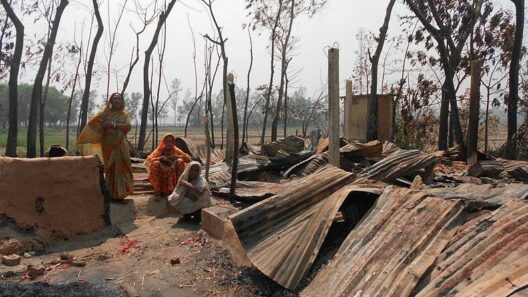When we think of exciting natural wonders, Lake Arenal often captures our imagination. Set against the backdrop of lush Costa Rican rainforest and juxtaposed by the majestic Arenal Volcano, this iconic lake embodies an intriguing climate that beckons adventurers and environmentalists alike. What is it about the climate at Lake Arenal that makes it so singular? Let’s delve into the myriad factors that define its weather patterns and explore what makes this lake a jewel in the heart of Central America.
To grasp the climate at Lake Arenal, one must consider its geographic context. Located in the northern region of Costa Rica, this area experiences a unique interplay of tropical and mountainous weather systems. The lake, which is the largest in Costa Rica, sits at an elevation of approximately 1,200 feet above sea level. Thus, it experiences a distinctive microclimate that varies significantly from coastal regions. The geographical disposition not only influences temperature variations but also shapes precipitation patterns that are pivotal to the region’s biodiversity.
The climate at Lake Arenal is predominantly tropical, characterized by warm temperatures and significant rainfall throughout the year. Typically, daytime temperatures hover between 70°F and 80°F (21°C to 27°C), while evenings can cool down to around 60°F (16°C). This relatively mild climate attracts a diverse array of flora and fauna, many of which are endemic to this region. The scorching sun often breaks through the verdant canopy, providing an enchanting backdrop dotted with colorful wildflowers and the calls of exotic birds. For nature lovers, Lake Arenal serves as a living canvas, painted by climatic conditions and punctuated by the vibrant life it supports.
One notable aspect of Lake Arenal’s climate is its pronounced wet season, which typically runs from May to November. During this period, the region experiences heavy rainfall, often culminating in afternoon thunderstorms that can be both awe-inspiring and quite dramatic. The intensity of the rain not only replenishes the lake but also sustains the ecosystem surrounding it. Consequently, this lush environment is a biodiversity hotspot. Scientists estimate that over 850 species of birds, countless mammals, and a plethora of plant life thrive within this climate, making it a critical region for ecological studies and environmental preservation.
In contrast, the dry season spans from December to April, offering a different yet equally captivating experience. During this time, the sunshine reigns supreme, and the lake becomes a hub for recreational activities—from kayaking to windsurfing. Visitors can marvel at the crystal-clear waters under the bright sun, making the enchanting views of Arenal Volcano even more prominent. This shift in weather also unveils a new layer of life in the area, as animals engage in various adaptations to cope with the drier conditions. The vibrant shifts in climate through the seasons mirror the inherent unpredictability of natural ecosystems, providing insight into the resilience and adaptability of life.
Moreover, the unique thermal dynamics surrounding the lake contribute to its climatic personality. The mountainous terrain influences wind patterns that can create localized weather phenomena—sometimes lending to unexpected changes. Even with the predictability of a typical tropical climate, the interplay of elevation and atmospheric conditions can surprise even the most seasoned meteorologists. Such complexities unveil the intricate relationship between geography, climate, and ecological diversity—a relationship that has fascinated researchers for decades.
With climate change now a pressing global concern, understanding the environmental stability of places like Lake Arenal becomes paramount. Research indicates that changes in precipitation patterns and temperatures could greatly affect this delicate balance. Fluctuations in rainfall can lead to droughts or floods, jeopardizing the biodiversity that has adapted to the region’s historical climate conditions. Moreover, as temperatures rise, the microclimate of Lake Arenal and its surrounding areas could undergo rapid alterations, leading to unforeseen ecological consequences. This awareness drives environmental activism and conservation efforts aimed at preserving the delicate ecosystems that thrive in this region.
Visitors to Lake Arenal experience not just a scenic escape but an intoxicating encounter with climate complexities. Whether you’re observing the meteorological drama of an afternoon storm or soaking in the tranquil beauty of a clear day, the climate here evokes a sense of connection to the natural world. Understanding and respecting these climatic elements adds layers to the experience, transforming the lake into a living laboratory of environmental interdependence.
In conclusion, the climate at Lake Arenal encapsulates a captivating blend of tropical warmth, significant precipitation, and varied ecological niches. The relationship between the lake’s weather and its rich biodiversity forms a compelling narrative that draws scientists and nature lovers to its shores. As we stand at the confluence of curiosity and commitment to conservation, the fascination with Lake Arenal underscores a broader dialogue about the significance of preserving such irreplaceable ecosystems in the face of changing global climates. Whether searching for adventure or a deeper connection to nature, Lake Arenal stands as a testament to the enduring allure of our planet’s natural wonders.






